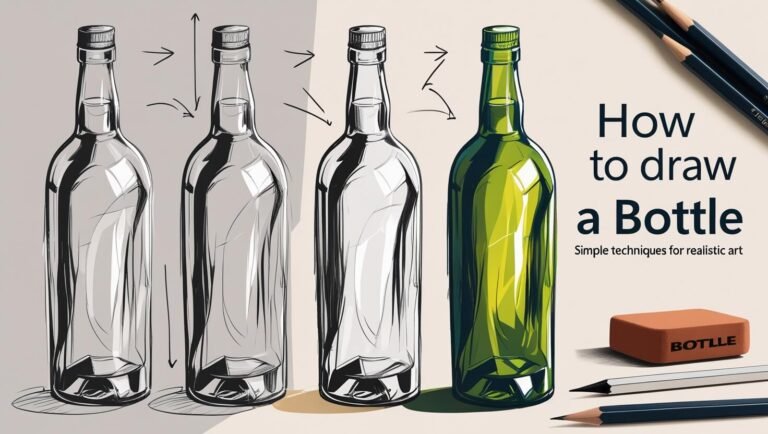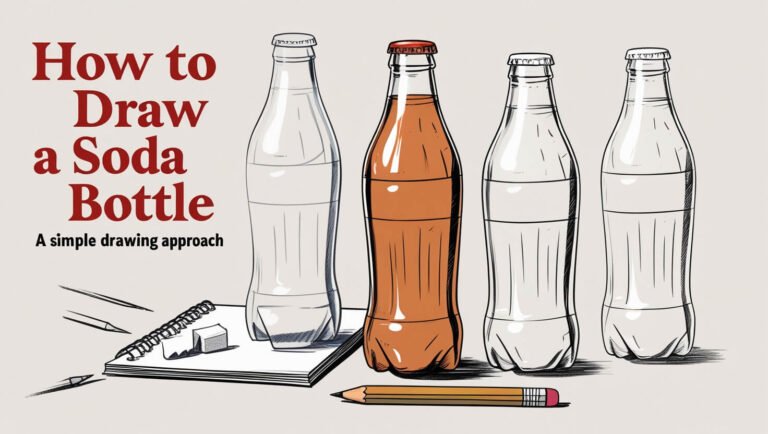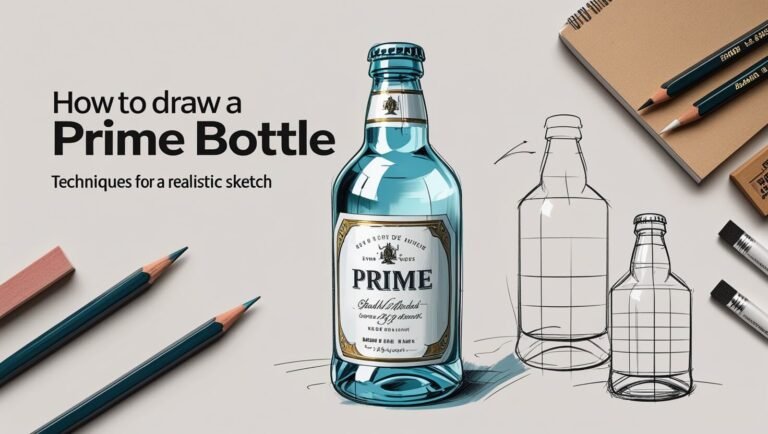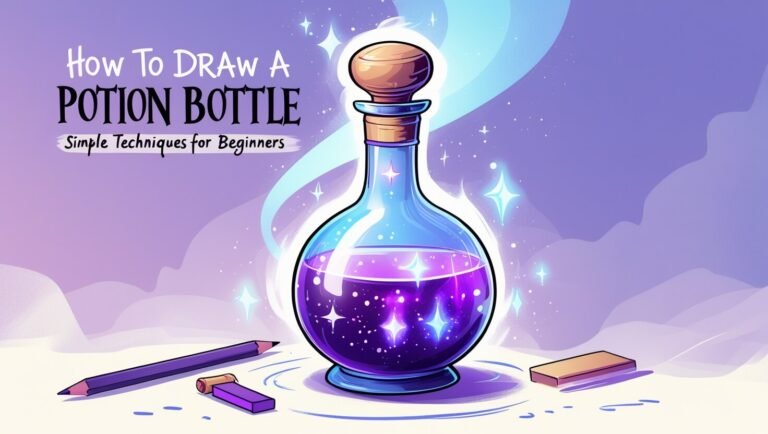How To Draw A Pill Bottle: Detailed Tips for Artists
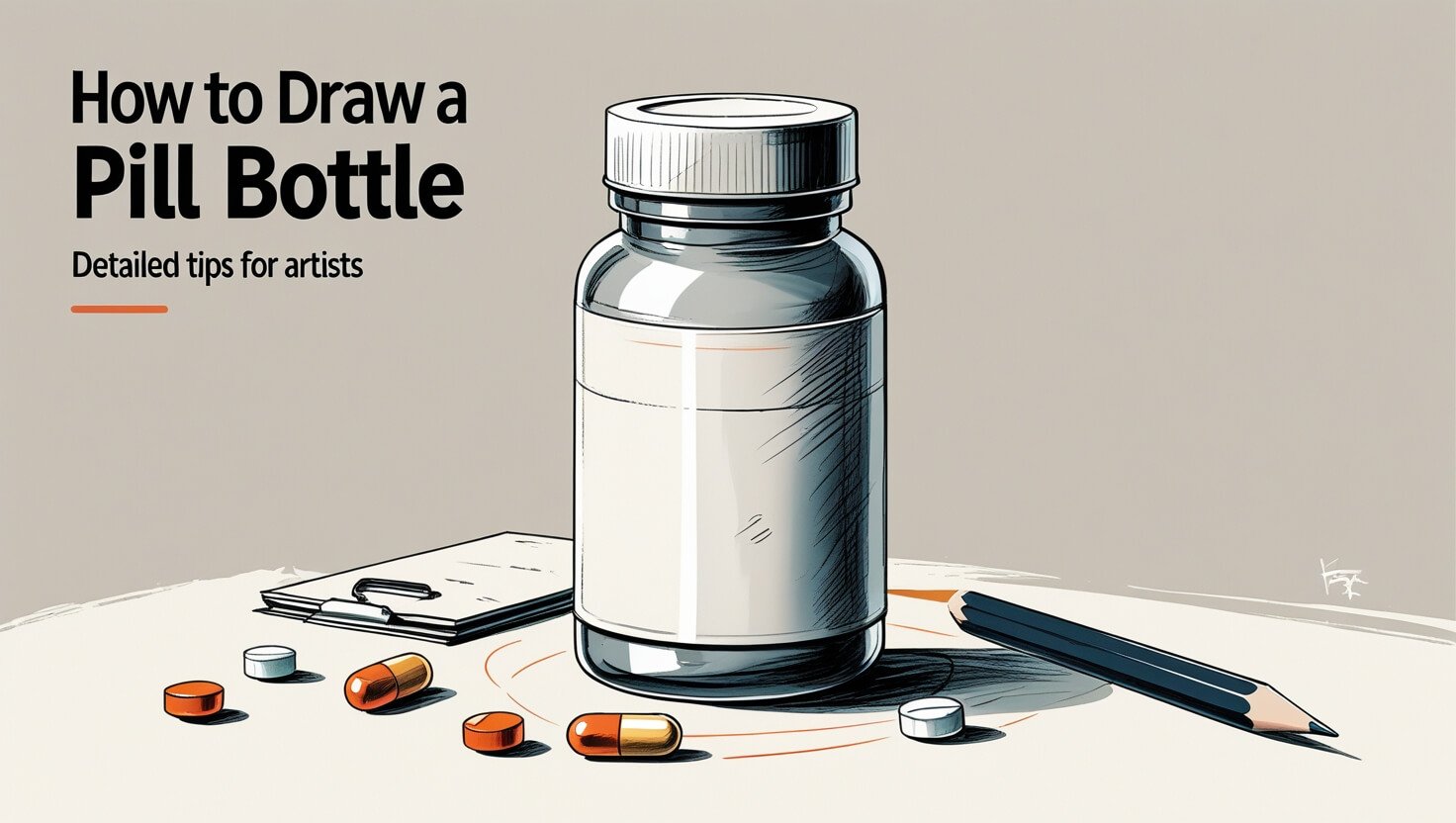
Can you make a realistic pill bottle drawing with simple shapes and proportions? There are over 1,900 drawing and coloring PDFs and 50+ ebooks on this topic. Many people want to learn how to draw a pill bottle.
A tutorial on drawing a pill bottle is a great place to start. This step-by-step guide will show you how to do it.
On Pinterest, 413 people looked for “pill bottle drawing easy”. They wanted simple and easy-to-follow tutorials. With paper, pencils, and erasers, and some practice, you can draw a realistic pill bottle.
This guide will give you the steps and tips to start drawing. It will also help you improve your skills with a tutorial on drawing a pill bottle.
Required Art Supplies and Setup
To start drawing pill bottles, you need the right art supplies and setup. This makes your drawing process comfortable and efficient. With the right tools, you can follow the easy pill bottle drawing instructions and create a realistic drawing.
Choosing the right paper is key. Look for smooth paper that’s medium in size. Also, get high-quality pencils and erasers. A sharp pencil and a good eraser help you get the lines and shading right, making your drawing look real.
Essential Drawing Materials
- Pencils (range of hardness levels)
- Erasers (kneaded and white vinegar)
- Paper (smooth, medium size)
- Sharpener
- Drawing board or surface
Paper Selection Tips
Choosing the right paper is important for your pill bottle drawing. Look for paper that’s smooth. This allows for precise lines and details. Avoid paper that’s rough, as it can make your drawing look less realistic.
Workspace Organization
A well-organized workspace is key for a productive drawing process. Set up your space to minimize distractions and ensure comfort. Consider getting a drawing board or a comfy chair to help you stay focused.
| Art Supply | Importance |
|---|---|
| Pencils | High |
| Erasers | Medium |
| Paper | High |
Basic Shapes and Proportions
To draw a realistic pill bottle, knowing the basic shapes and proportions is key. A pill bottle has a cylindrical body, rounded shoulders, and a flat top. Start by sketching the main body, focusing on the right proportions and measurements.
For a realistic pill bottle illustration, here are some tips:
- Use reference images to get an accurate idea of the shapes and proportions.
- Measure and proportion the different parts of the pill bottle carefully.
- Pay attention to the details, such as the label and the cap.
Getting the proportions right is critical when drawing a pill bottle. The cylindrical body should be the main focus. The rounded shoulders and flat top add realism. By following these tips and using the right techniques, you can create a detailed and realistic pill bottle illustration.
| Shape | Proportion | Description |
|---|---|---|
| Cylindrical Body | 60-70% of total height | Main body of the pill bottle |
| Rounded Shoulders | 10-15% of total height | Curved section connecting the body to the cap |
| Flat Top | 5-10% of total height | Top surface of the pill bottle |
Mastering the basic shapes and proportions of a pill bottle will help you create a realistic and detailed illustration. Use reference images, measure carefully, and focus on the details for a high-quality drawing.
Creating Cylindrical Structure
To start your pill bottle drawing, use a vertical line to form the body. This method helps you draw a realistic and symmetrical shape. A step-by-step guide can help you draw the bottle’s cylindrical structure.
When drawing a pill bottle, break it down into basic shapes like cylinders and circles. Use a compass or a circular object for the base and cap. It’s important to measure and proportion your drawing to make it look real.
Vertical Line Technique
The vertical line technique helps you draw the pill bottle’s body. It’s great when used with a step-by-step guide. This method makes your shape look more realistic.
Circular Base and Cap Formation
To draw the circular base and cap, use a smooth, curved line. A tutorial can give you tips for a realistic circular shape.
Proper Dimension Ratios
Getting the right dimensions is key for a realistic pill bottle drawing. Use a guide to measure and proportion your drawing. A simple guide will help you break down the shape into basic forms.
Pill Bottle Cap Details
When you’re into pill bottle sketching tips, the cap is key. It’s a critical part of the pill bottle. Its details can either make or break your drawing’s realism. In an art lesson on drawing pill bottles, you’ll learn about proportions, shape, and texture for the cap.
To draw a realistic pill bottle cap, focus on its shape, size, and texture. The cap is often slightly indented with a small ridge around the edge. Use reference images to understand the cap’s details better. When drawing medicine containers, these small details are vital for a realistic look.
Some important tips for drawing the cap include:
- Use a gentle curve for the indented part of the cap
- Add a small ridge around the cap’s edge
- Use shading and texture for a realistic effect
Practice pill bottle sketching to draw a detailed and realistic cap and improve your drawing.
Light Source and Shadow Mapping
To make a realistic pill bottle drawing, knowing about light and shadow is key. A good tutorial should teach how to position the main light source. This greatly affects the drawing’s look. When drawing medicine, think about the light source for a realistic look.
Shadow mapping is vital in pill bottle drawing. Shadows add depth and dimension. Start by finding the light source and mapping out shadow areas. This makes your drawing look more real and three-dimensional.
Primary Light Placement
First, place the main light source. Think about its position and how it will cast shadows on the pill bottle. This makes your drawing more realistic and interesting.
Shadow Cast Techniques
After placing the light, create shadows. Use different values to show depth and dimension. Remember the pill bottle’s shape and size when making shadows. This makes your drawing more realistic.
Reflection Points
To make your drawing even more realistic, add reflection points. Add small highlights where the light reflects off the pill bottle. Using these techniques, you can create a realistic and engaging drawing of medicine containers.
Texture and Surface Details
Creating a realistic pill bottle drawing requires focus on texture and surface details. A tutorial on drawing a pill bottle must cover these aspects. Understanding the smoothness of the plastic and the ridges is key. A step-by-step guide for drawing a pill bottle helps master these details.
For an easy pill bottle drawing, use reference images and add texture and shading. Different materials like pencils and markers can help achieve various textures. For instance, pencils are great for fine lines, while markers work well for bold lines and shading.
Here are some tips for adding texture and surface details:
- Use different pen strokes and marks to show textures.
- Try out various materials, such as pencils and markers.
- Add shading and highlights for a realistic look.
Practicing can help you create a realistic pill bottle drawing that showcases your detail and artistic skills. It takes time and patience.
Label Design Elements
When drawing a realistic pill bottle, the label design is key. A well-designed label makes your artwork look authentic. You’ll need to think about text placement, warning labels, and prescription info layout. Pill bottle sketching tips help you draw the label and its parts accurately.
In an art lesson on drawing pill bottles, you’ll learn about label design details. The label should have the medication name, dosage, and warnings. Use real pill bottle images to study the label’s layout and design. This makes your label drawing more accurate and detailed, key for drawing medicine containers.
Text Placement
When placing text, think about size and font. The text should be clear and easy to read. Use a ruler or drawing tool to place text accurately and evenly.
Warning Label Details
Warning labels are vital, sharing important info about the medication. Include warnings about allergic reactions or interactions with other meds when drawing them.
Prescription Information Layout
The prescription info layout should have the patient’s name, medication name and dosage, and the doctor’s info. Draw this info clearly and accurately, using a font and layout similar to real pill bottles.
Advanced Shading Methods
To make a realistic pill bottle drawing, you need to learn advanced shading techniques. A good tutorial should teach you cross-hatching and blending. These methods add depth and dimension to your drawing. Think about the lighting and how it changes the shading on the bottle.
Using reference images is key when drawing medicine containers. They help you understand shading and lighting. For instance, a photo of a pill bottle can show you how light reflects. This can guide you in making your drawing look real.
Cross-Hatching Application
Cross-hatching is a method for shading and texture. It involves layering lines at different angles. This creates depth and texture in your drawing. To use cross-hatching, start with lines that follow the bottle’s shape. Then, add more layers at various angles to build up values and texture.
Blending Techniques
Blending is for smooth transitions between values in your drawing. It uses a blending stump or tortillon to soften line edges. To blend your drawing, use a blending stump to merge line edges. This makes your drawing look more realistic and three-dimensional.
Learning these advanced shading methods will improve your pill bottle illustrations. Practice often and use reference images to enhance your skills. With effort and patience, your drawings of medicine containers will look incredibly real.
Common Mistakes When Drawing a Pill Bottle
When you’re drawing a pill bottle drawing easy and realistic, knowing common mistakes is key. A tutorial on drawing a pill bottle can help a lot. But, even with a step-by-step guide for drawing a pill bottle, mistakes can happen.
Common mistakes include getting the proportions wrong, making shape errors, and texture issues. To avoid these, it’s important to use reference images and check your work. Here are some tips to remember:
- Use a reference image to ensure accuracy
- Double-check the proportions and shapes
- Pay attention to texture and shading
By following these tips and being careful, you can make a realistic and detailed pill bottle drawing. Remember to practice often. And don’t worry about making mistakes – they can lead to new ideas and techniques.
| Mistake | Tip to Avoid |
|---|---|
| Proportion errors | Use a reference image |
| Shape mistakes | Double-check the shapes |
| Texture issues | Pay attention to texture and shading |
Let’s Finish
Mastering how to draw a realistic pill bottle takes time and effort. We’ve covered the basics, like understanding shapes and proportions. We also talked about creating the bottle’s structure and using light and shadow.
Whether you’re new to drawing or have experience, keep trying different bottle designs. This will improve your skills over time. The step-by-step guide for drawing a pill bottle helps you grow as an artist, not just draw bottles.
Try out different tutorials on drawing a pill bottle and practice with other bottle types. This will make you more confident and skilled in drawing pill bottles and more.
Enjoy the learning process, celebrate your achievements, and ask for feedback from others. With hard work and a desire to learn, you’ll get better at drawing pill bottles and more.
Usual Questions:
What are the essential drawing materials needed to create a realistic pill bottle?
You’ll need pencils, erasers, and paper. A ruler and kneaded eraser can also be helpful. Choose the right pencils and paper for your drawing.
How do I properly set up my workspace for drawing a pill bottle?
Set up your workspace well. Use a comfy surface, good lighting, and keep distractions away. This helps you stay focused and productive.
What are the basic shapes and proportions of a pill bottle that I need to understand?
The pill bottle has a cylindrical body, rounded shoulders, and a flat top. Knowing these shapes and proportions is key to a realistic drawing.
How do I create the cylindrical structure of the pill bottle?
Start with vertical lines for the body. Add a circular base and cap. Focus on the right dimensions for an accurate shape.
What details should I focus on when drawing the pill bottle cap?
Look at the cap’s shape, size, and texture. Include ridges and a seam. Use reference images and details for realism.
How do I effectively use light source and shadow mapping to create depth and realism in my pill bottle drawing?
Use a primary light source and create shadows. Add reflection points for depth. This makes your drawing look more real.
What techniques should I use to capture the texture and surface details of the pill bottle?
Use pencils and markers for texture. Focus on smoothness and details like ridges. These details add realism to your drawing.
How should I approach drawing the label and other design elements on the pill bottle?
Pay attention to text and design layout. Use reference images for authenticity. Focus on font, color, and details for a real look.
What advanced shading techniques can I use to create more realistic effects?
Try cross-hatching and blending for depth. Experiment with materials to find what works best for you. These techniques add realism to your drawing.
What are some common mistakes to avoid when drawing a pill bottle?
Avoid proportion errors, shape mistakes, and texture issues. Use reference images and double-check your work. Attention to detail helps avoid mistakes.

